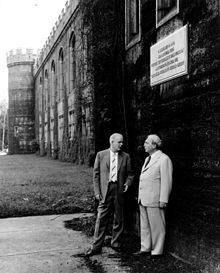Stagg Field
The site of the first artificial nuclear chain reaction, which occurred within the field's west viewing-stands structure, received designation as a National Historic Landmark on February 18, 1965.
Chicago Pile-1, the world's first artificial nuclear reactor, was built in a squash court under the west stands of Stagg Field, which was by then no longer used for football.
The stadium was primarily used for college football games, and was the home field of the Maroons.
The University of Chicago discontinued its football program after 1939 and left the Big Ten Conference in 1946.
The school's current Division III football team uses the new field as their home.
It is also home to the Chicago Maroons soccer, softball and outdoor track teams.


